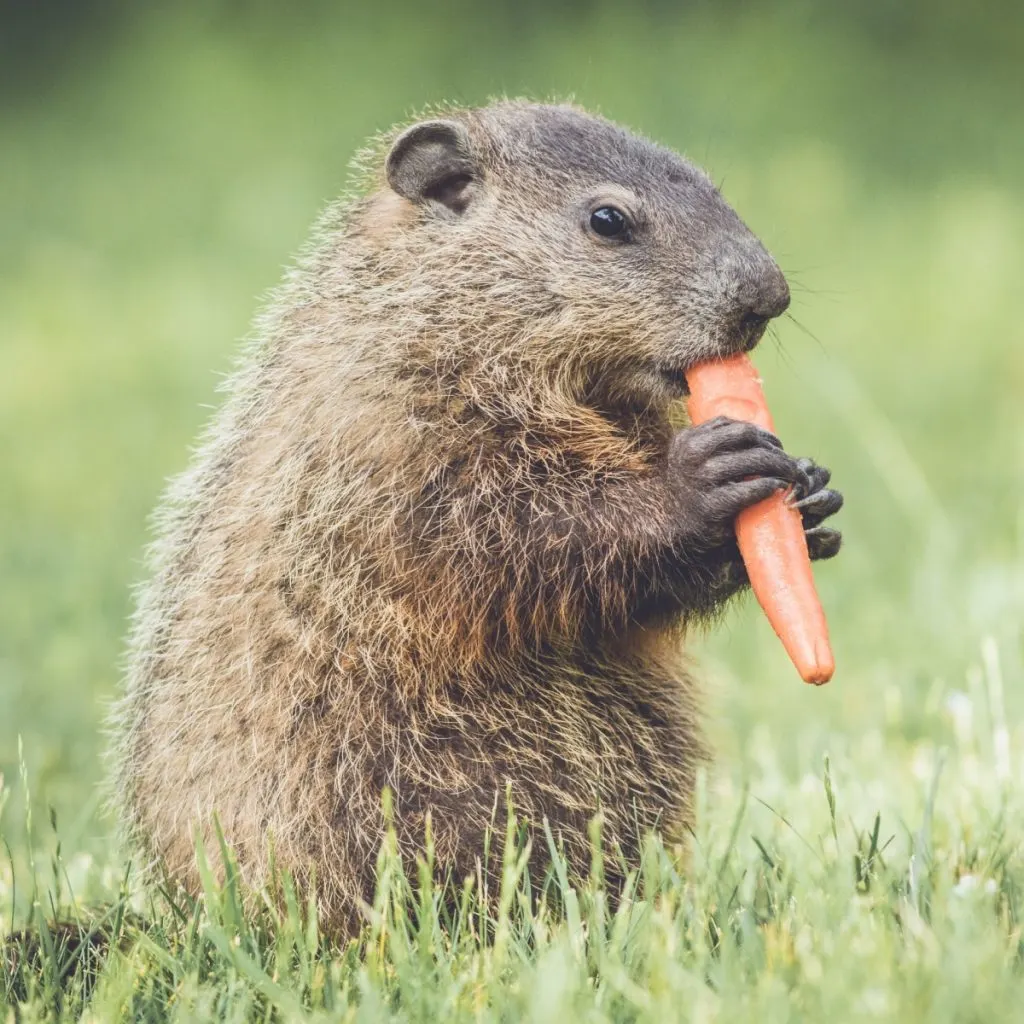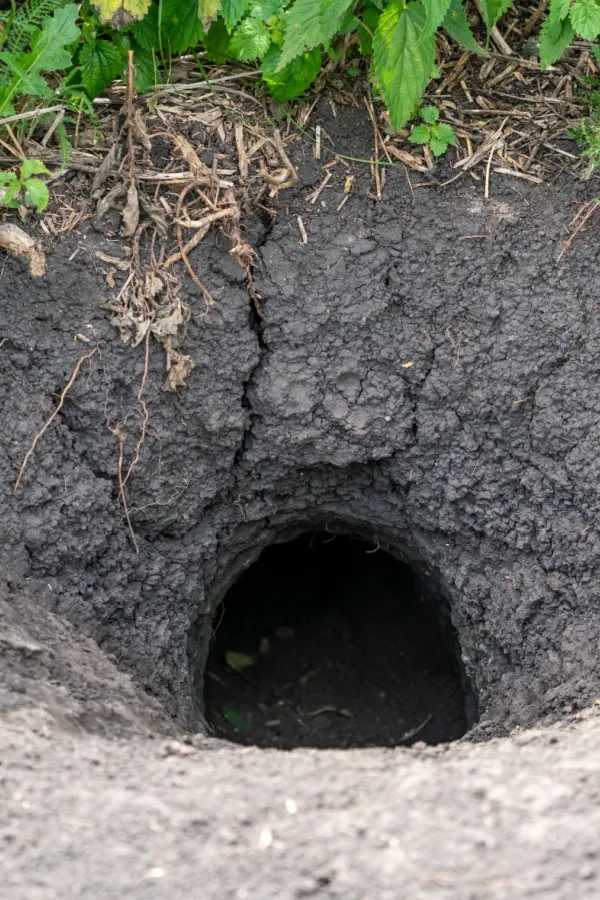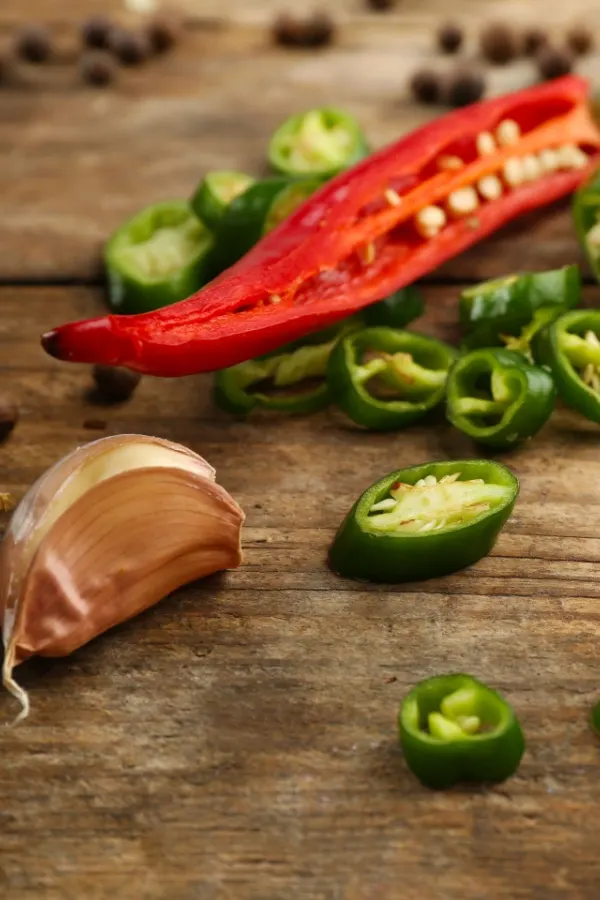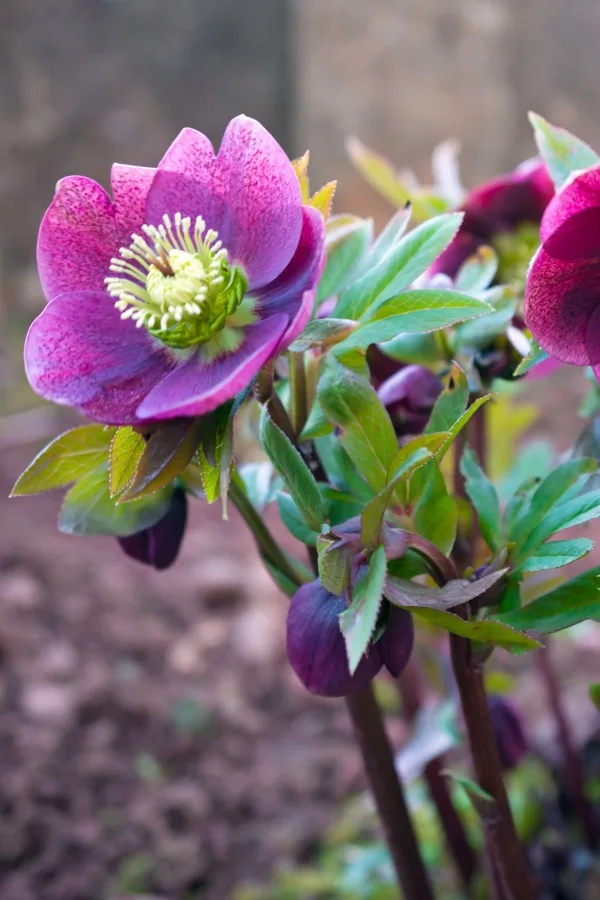Looking for a few safe and humane ways to keep groundhogs out of your garden – and from destroying your plants?
Groundhogs can absolutely devastate a garden. In fact, a single groundhog is capable of consuming over a pound and a half of vegetation every day. Some of their garden favorites include berries, carrots, celery, tomatoes, cucumbers, sweet corn, squash – along with other greens like dandelions, grass and clover. But one thing is for sure – they can wreak havoc on more than just plants!
Not only do groundhogs consume enormous amounts of vegetation, they can also damage driveways, foundations, and other structures on your property. As they burrow down into the ground, they create tunnels that can span up to 100 feet long with openings on each end. And those tunnels can cause serious foundation issues.

While groundhogs aren’t usually aggressive, they can also carry rabies and other disease. Add that to the property damage and the destruction of garden crops – and you have more than enough reasons to try to keep them out of your garden and off your property!
How To Know You Have A Groundhog Issue
So how do you know when a groundhog is visiting your garden? When it comes to crops, groundhogs typically don’t just eat one or two plants and call it a day. Instead, they often feast on several during one feeding.
Look for crops that have ripening fruit or vegetables and take note of any that are mysteriously disappearing. Unfortunately, you often won’t catch the groundhog in the act so you might have to look for other signs.
The best way to identify the presence of groundhogs is to look for their burrow openings. Look for holes that have a 10 to 12-inch sized opening. Smaller holes often indicate issues with moles as opposed to groundhogs. See: The Secret To Stopping Ground Moles

The openings will often be located against or under a structure. Look around a building’s foundation, underneath decks and patios, under sheds, or around anything with a concrete slab.
Typically, you will also see piles of soil randomly thrown about around the hole opening. Unlike a mole, you won’t be able to see the rest of the tunnel from above the soil. This is because a groundhog’s tunnel is several feet below the surface.
Last but not least, the footprints or groundhog tracks usually give them away. They will be around 4 to 12 inches apart with the front paws having four toes and the back ones having five. The sharp claw marks will appear curved, which allows for easy digging.
Once you have identified that you have a groundhog on your hands, it’s time to take action – and here are four safe and effective solutions that usually do the trick!

4 Ways To Keep Groundhogs Out Of The Garden
Install Small Fencing
Groundhogs do have the ability to climb trees and some structures, but they struggle with thin fences. One of the most effective ways of keeping them out of your garden space is to install a short fence that can move.
Even a fence as short as 1 foot tall can be enough to discourage these pests from using your garden as a buffet. The important key is to make sure that the fence is a bit wobbly and not super rigid.
This will help deter them from climbing. Small snow/safety fences or chicken wire work great for this and are easy to install. You can even get the safety fences in green to blend in with the garden. Affiliate Product Link: Plastic Mesh Fence Safety/Snow Fence, 4’x100′ Roll
To help even more, place a couple of little pinwheels around the perimeter of the fence. Groundhogs are spooked by the noise and vibration of the pinwheels spinning – and together with the fence simply move on.
Hot Pepper Spray – How To Keep Groundhogs Out Of The Garden
While there are several different commercial sprays out there that tote the ability to keep groundhogs out of your garden, you can easily make your own at home with hot peppers. Since groundhogs have a keen sense of smell, you can use it to your advantage with strong scents.
Hot pepper spray is harmless to your plants – but it leaves behind a spicy flavor as it dries. Not only will this work on keeping groundhogs from munching on your plants, but a whole host of other pests and insects as well.
To make it, you need four simple ingredients: 1 gallon of water, 8 to 10 hot peppers (or 5 tablespoons of hot pepper flakes), 6 cloves of garlic, and a few drops of dish soap.
Wearing gloves, chop up the peppers and garlic into small pieces. Place them in a large saucepan and heat for about 5 minutes on low heat. Next, add the water and simmer for about 30 to 45 minutes.
Remove the mixture from the heat and allow it to steep for 24 hours. Strain the liquid into a spray bottle or pump sprayer once cooled. Add a few drops of dish soap and your mix is good to go. Product Link: Petra 1 Gallon Pump Sprayer
To use, simply spray it around the perimeter of your garden or on all of your plants. Repeat after it rains or after mornings with heavy dew.

Castor Oil – How To Keep Groundhogs Out Of The Garden
Similar to hot pepper spray, groundhogs also hate the smell of castor oil. Make your own repellent spray by mixing one part castor oil with three parts water. Spray this solution around their burrowing holes.
You can also use the castor oil spray around your garden to further help deter the pests from coming around. Reapply every couple of weeks or after heavy rains. Affiliate Product Link: HERITAGE STORE Organic Castor Oil
Companion Planting – How To Keep Groundhogs Out Of The Garden
While all animals will resort to eating about anything if they are starving, there are a few plants that groundhogs don’t like. You can grow these as companion plants along with your vegetables in your garden to help the majority of groundhogs look elsewhere for their lunch.
Some plants are toxic to animals if they are consumed, so they make a perfect choice. Flowers like larkspur, foxglove, hellebores and lily-of-the-valley are excellent choices. You do need to be cautious with pets and children around with this approach.

Other flowers aren’t toxic but still work well to keep groundhogs out of your garden. Those include ageratum, butterfly weed, bleeding heart, sweet alyssum, and yarrow. Also, any plants that have a strong odor such as lavender are great companion plants as well to keep groundhogs away.
Even if one of these tactics isn’t enough alone to keep groundhogs from your garden, try implementing a few of them at the same time. Before long, you’ll find the perfect combination to keep your vegetables safe and groundhog-free!
This Is My Garden
Follow Our Facebook Page For Great Gardening Tips And Advice! This Is My Garden Facebook Page
This Is My Garden is a garden website created by gardeners, for gardeners. Jim and Mary Competti have been writing gardening, DIY and recipe articles and books and speaking for over 15 years from their 46 acre Ohio farm. They publish three articles every week, 52 weeks a year. Sign up today to follow via email, or follow along!

